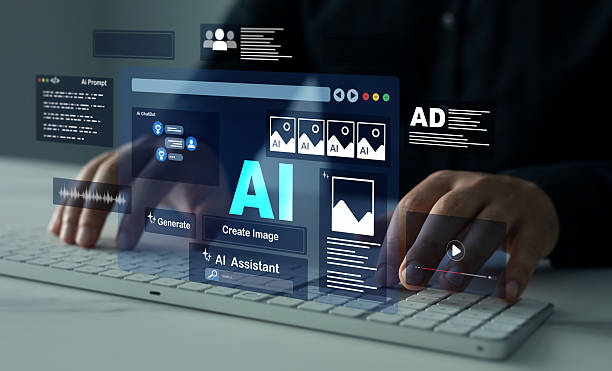When I first entered digital marketing about a decade ago, the process was simple. Define your audience, choose your channels (Google Ads, Facebook, email), write your copy, run ads, check metrics, and make adjustments. Over time, you gradually improved.
Fast forward to 2025. That approach is changing due to something more dynamic: artificial intelligence. It’s not just an add-on tool; it’s becoming part of how you think about marketing, shift budgets, and deliver experiences. If you are building or growing your business today, AI is essential. Here’s how I see it evolving, what you should focus on, and how to stay ahead without getting caught up in jargon.
The AI marketing moment: from experiment to baseline
For years, “AI in marketing” was just a buzzword. Some early adopters tried out chatbots, predictive analytics, or content automation. Many others were cautious, worried about costs, complexity, or losing their brand voice.
But today, adoption is speeding up. According to Adobe’s 2025 trends, more organizations report that generative AI is producing real returns, not just small experiments. Meanwhile, analysts from Gartner point out that generative AI is changing how brands create, speed up, and even recreate content and customer experiences. The change is real.
The question is no longer if AI will matter. It’s about how quickly and smartly you use it.
What “AI-driven campaigns” really means (beyond buzz)
It helps to break down the shift into three overlapping areas:
Strategic intelligence
AI is increasingly managing data tasks like predictive models, segmentation, and forecasting. It turns that data into strategic insights. Rather than just asking, “Which demographic had the highest click rate,” your AI tools might uncover micro-segments or niche buyer intents you never thought of.
Creative synthesis
Beyond writing drafts or headlines, generative models (text, image, video) now allow you to create campaign assets in different formats from a single brief. For example, one product story can be transformed into email copy, social media posts, video scripts, and localized creatives at once.
Autonomous orchestration
The new frontier is systems that not only produce but also optimize themselves. You input the goal (like ROAS, engagement, lifetime value), and the AI adjusts targeting, creative rotations, budgets, and sometimes even messaging without needing constant human input.
In fact, some platforms (like Omneky) are introducing Advertising Agents that automatically generate, launch, and refine campaigns across channels. That’s a sneak peek into the future.
Where entrepreneurs tend to get stuck and how to avoid it
Working with founders and small teams, I’ve noticed recurring challenges. Here are three common traps and how to navigate them:
Trap: thinking AI is plug-and-play
Early adopters often expected to just plug in a tool and get perfect outcomes. But marketing is complicated. There are nuances, brand voice, context, and edge cases. AI outputs are recommendations, not guaranteed fixes.
Workaround: Build feedback loops. Let your team edit and adjust. Treat AI as a partner, not a replacement.
Trap: overlooking data quality and alignment
Effective models depend on good data. If your CRM, customer journey logs, or conversion tracking are inconsistent, AI will only amplify mistakes.
Workaround: Conduct an audit. Clean your data, standardize naming, and ensure events (clicks, adds to cart, purchases) are tracked accurately.
Trap: pursuing the latest tech too soon
Every few months, a new “audio-video AI ad tool” comes out. Jumping into every trend wastes money and attention.
Workaround: Make sure any new tech aligns with a specific outcome. Only test what contributes directly to revenue, retention, or differentiation.
Real-life snapshot: how a boutique brand used AI to scale
Here’s a story I like to tell:
A small fashion label in Europe had limited ad spend but plenty of creative ideas. They began using a generative AI tool to expand visual concepts: they took one main product photo and created alternative angles (lifestyle shots, flat lays, and background changes). They also used an AI copy generator to create variations of descriptions and ad copy for different markets. Their campaign system then ran over 50 micro-variations across audiences. Over two months, this approach identified three core combinations that exceeded previous creatives by 40% in conversions.
That boost allowed them to increase their ad spending and branch into related niches without hiring a full creative team. The key was that they didn’t chase every AI tool. They chose a few effective ones that worked together.
Three guiding principles for AI-driven campaigns
Here are three principles I find useful for guiding AI adoption that help maintain balance and support long-term success:
- Human + Machine, not Machine instead of Human
AI is powerful, but relying solely on AI without human oversight can lead to bland or off-brand results. The true differentiation comes from human taste, context, and instincts. As a former OpenAI executive put it, “human taste will become the real differentiator” in a world filled with AI output. Smart brands will be those that use AI to enhance their uniqueness, not replace it.
- Aim for hyper-relevance, not just personalization
AI will not only serve content; it will anticipate needs, moods, and micro-moments. Intelligent systems will deliver different messages based on whether someone visited the site by accident or browsed your product catalog before. That goes beyond standard personalization; it’s about adapting narratives to fit the context.
- Design for visibility in AI contexts
As conversational search and generative systems become prevalent, your brand needs to stand out in those answers, not just through Google’s search index, but also through AI summaries. This is sometimes referred to as Generative Engine Optimization (GEO). It ensures that your content can be cited, referenced, and surfaced within AI models. It’s an evolving field, but one worth paying attention to.
How to get started in the next 90 days
You don’t have to overhaul everything overnight. Here’s a step-by-step plan that you and your marketing team (even if small) can follow:
| Phase | Focus | What You Do |
| Weeks 1–2 | Audit & foundation | Clean up your customer and campaign data. Ensure tracking is unified. Map your customer funnel clearly. |
| Weeks 3–4 | Pilot & learn | Choose one campaign (email drip, social ad, content push). Run a micro-test with AI assets + human review. |
| Weeks 5–8 | Expand & optimize | Use AI to generate variants (copy + creatives), let your system auto-optimize. Monitor performance and iterate. |
| Weeks 9–12 | Build oversight & standards | Create prompt libraries, evaluation rules, launch governance. Document what “on-brand” means. |
Even small improvements like a 10–15% gain in efficiency can add up quickly over time.
A side note: AI for imagery & visual content
There’s a growing area in visual content generation. Whether you’re creating product ads, social graphics, or promotional videos, AI tools will soon allow you to turn one prompt and photo into multiple styled versions.
One useful tip: for team profiles, creative experiments, or internal presentations, use an AI-based profile picture maker to generate stylized, brand-aligned portraits quickly. It’s not just about headshots. Visual consistency builds trust and helps unify the look and feel of assets.
If you dive deeper into visual tools, you may also find them handy for producing product visuals, campaign banners, or even ad thumbnails. AI is already blending creative thinking with execution.
Risks, ethics, and guardrails (you can’t skip this)
AI’s capabilities come with responsibilities. Here are a few issues to keep in mind:
Bias & fairness
Models can reinforce stereotypes (age, gender, demographic). A recent academic study found that slogans created by large language models can skew messaging across different demographic groups. Always check your outputs for fairness.
Transparency & authenticity
If customers believe they are being manipulated by unseen algorithms, trust diminishes. Be clear when necessary, like saying, “We use AI to help craft this offer.”
Data privacy & compliance
If you use sensitive customer data with AI, ensure you comply with regulations (GDPR, CCPA) and manage permissions carefully.
Model drift & quality decay
AI models change over time. The same prompt may yield different results later on. Always keep human review involved, don’t let outdated prompts run unchecked.
Where this is headed (a peek ahead)
It’s tough to predict exactly, but here’s where I think AI marketing is going:
Full AI campaign creation from a brief
Expect tools that allow you to state, “I want a 4-week acquisition campaign for product X in market Y.” The system will then provide structure, creative media plans, landing pages, and ad sets all at once.
Conversational commerce as a media channel
Your ad becomes a mini-conversation. The user can respond, ask questions, and receive tailored offers all within the ad context or through voice interfaces.
Contextual agents and ambient marketing
Ads that respond to context like location, weather, and recent behavior, and change dynamically. Picture marketing that feels alive.
Ethical and regulatory distinction
As AI becomes mainstream, consumer expectations and regulations will catch up. Brands that prioritize transparency and integrity will earn lasting trust.
When you look back in a few years, you might see the early 2020s as the time when marketing tools became “smart,” yet still required human guidance. The next decade will focus on fluency, understanding how to communicate with AI, integrate it into your workflow, and use it to highlight what makes your brand special.
If you develop that fluency now, you won’t be trying to catch up with AI; you’ll be working alongside it.
Frequently Asked Questions (FAQs)
- What is an AI-driven marketing campaign?
An AI-driven campaign uses artificial intelligence to analyze data, create content, optimize targeting, and adjust strategies automatically. This allows campaigns to respond in real time for improved results.
- Do small businesses really need AI for digital marketing?
Yes, though perhaps not to the same extent as larger brands. Small businesses can leverage AI tools for tasks like content creation, email optimization, and customer segmentation without requiring a big marketing team.
- What’s the biggest risk of using AI in marketing?
The main risks include data bias, loss of brand authenticity, and privacy concerns. Entrepreneurs should keep a human editor involved to ensure outputs stay accurate, ethical, and consistent with their brand.
- Can AI replace human marketers completely?
No. AI can take over tasks and offer insights, but creativity, empathy, and brand stories still need a human touch. The best strategy is to use AI as a partner rather than a substitute.
- How can I start using AI in my campaigns right now?
Start small. Pick one campaign and use AI to create different versions of ad copy, images, or email subject lines. Track results, refine your approach, and gradually expand as you become more confident.



Leave a Reply